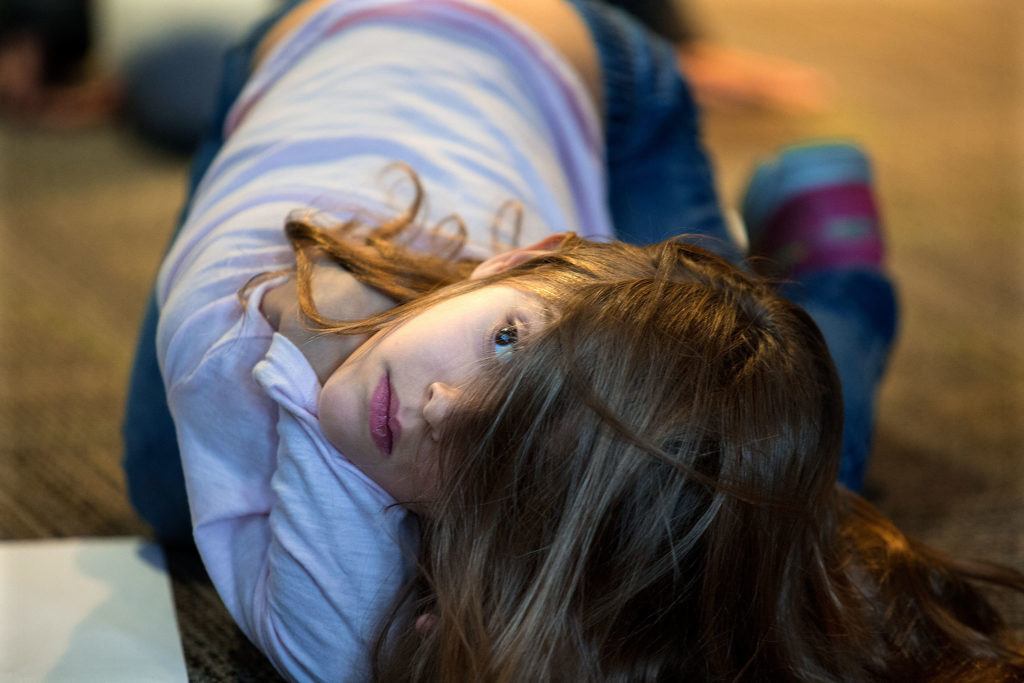ARLINGTON — Pam Guilford started with a question: What did the children know about fossils?
Hands shot into the air. They’re buried in the ground when dinosaurs die, one child said. They can tell you what the skeleton looked like but not what color the dinosaur was, another added. One boy announced loudly that the triceratops was the last dinosaur to die.
The children sitting in a loose circle on the carpet of the Arlington Library knew a few other things, too. Fossils need to be handled gently so they don’t break. Paleontologists are scientists who dig up fossils. Fossils tell people about animals that lived a long, long time ago.
Guilford, with the Imagine Children’s Museum, led “Fossilology” Dec. 19. It was the first of 19 science education events at Sno-Isle Libraries this month.
The hands-on lessons were meant to keep kids learning during Winter Break and spanned multiple topics.
At the Lynnwood Library last week, kids learned about optical illusions and the tricks they can play on the human brain with the “I Can’t Believe My Eyes” event. In Mukilteo, they focused on how potential and kinetic energy relate to roller coasters. Children learned about chemical reactions in Granite Falls and how balance, motion and gravity impact tops in Mountlake Terrace.
“We want them to get excited about science and playful learning,” Guilford said. “We want them to have fun so they learn to ask questions.”
During “Fossilology,” she showed the kids pictures of fossils and asked them to guess what they were. There was a turtle shell, a triceratops skeleton, petrified wood and termites trapped in amber. The children got most excited about a shark tooth the size of an adult hand and fossilized dinosaur poop.
They played a game in which everyone pretended to be an aquatic animal that would live in the Puget Sound, including whales, snails and salmon. One boy asked to be “the grandpa whale shark with teeth the size of a skyscraper.” Guilford then gave them each a card that said how their animal died. Most of them wouldn’t have become fossils because they were washed away, dried out or eaten. Of 16 animals, only two were trapped in sand or mud to become fossils.
The group also drew pictures of their own dinosaurs and examined real fossils laid out on red lunch platters.
Jacob Worrell, 6, focused intently on drawing his dinosaur. It had 10 big teeth, two legs and tiny arms with three fingers.
“He loves dinosaurs,” mom Kacie Worrell said. “He draws them all the time.”
The most popular activity was fossil finding. In groups of five or six, kids dug in a plastic bin of rocks for plaster models of fossils. They used brushes to uncover their prizes, then painted them to look old and used pictures to help identify them.
Reidar Gudgeon, 7, found a bear tooth, though he couldn’t tell it was a tooth at first. He learned that fossils can be really big, he said.
Reidar’s mom, Corie Gudgeon, teaches science at Cascade High School. She brought Reidar to the library so he could learn something different.
“I love that they’re doing this,” she said.
Sno-Isle and Imagine Children’s Museum wanted to keep kids learning science without making them feel like they’re doing homework, said Dawn Rutherford, Sno-Isle teen services coordinator. Science, technology, engineering and math education has become a focus at local libraries.
“We recognize that there’s going to be a huge influx of jobs in Snohomish County and Island County,” she said. “That’s something we’ve heard from employers is that they need people with these skills. Getting kids engaged at a young age is a good way to introduce them to learning STEM.”
Lesla Wolf, the children’s librarian in Arlington, hopes the events encourage kids to be curious.
“It’s definitely something where we want them to take what they learn and run with it,” she said.
Kathryn English brought her three kids, Daniel, David and Emily English, to the event in Arlington.
Daniel’s favorite part was digging for fossils. The 6-year-old found a shark tooth. Now he wants to find some real fossils, he said.
“The coolest thing I learned is that dinosaurs turn into bones,” he said. “I’d want to find a T-Rex. Maybe I can dig under my house and find one.”
The final Winter Break science program is scheduled for Jan. 11 in Darrington. For a full list of other local library programs, go to sno-isle.org/events.
Kari Bray: 425-339-3439; kbray@heraldnet.com.
Talk to us
> Give us your news tips.
> Send us a letter to the editor.
> More Herald contact information.


























